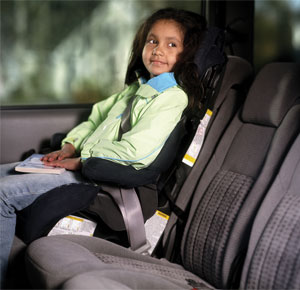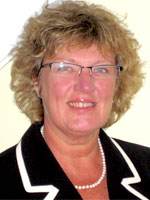 |
| Since January 1, 2007, it is the law in Nova Scotia for children that are under 145 cm (4' 9") or under age nine to be in a booster seat while traveling in a vehicle. (Photo courtesy Child Safety Link) |
Beth Bruce has heard a lot of reasons from parents why their school-aged children arenвҖҷt using booster seats. вҖңWeвҖҷre just going on a short trip.вҖқ вҖңMy child is too big.вҖқ вҖңHe feels like a sissy.вҖқ вҖңI donвҖҷt want to argue with her.вҖқ
вҖңThere are whole scenarios parents will give us,вҖқ says Dr. Bruce, of РВјУЖВБщәПІКҝӘҪұЦұІҘвҖҷs Faculty of Health Professions and Department of Surgery. вҖңBut what we donвҖҷt know is why those things convince them to put their children at risk.вҖқ
School-aged children in Canada are 10 times more likely than children in other age groups to die or sustain severe injury in road crashes. Misuse of safety seats and failure to use of booster seats use are primarily responsible for these high rates of automobile deaths and injuries.
Dr. Bruce was recently awarded $438,000 from AUTO21 Network of Centres of Excellence to improve our understanding of parentsвҖҷ use of booster seats. Using a booster seat correctly reduces risk of injury by 70 per cent and death by 90 per cent.
|
A national 2006 Transport Canada study reported that at least 70 per cent of Canadian children aged four to nine years were not in a booster seat. In Nova Scotia the rate is 65 per cent. Of those Nova Scotia children who were not in a booster seat and were involved in a car crash, 83 per cent suffered an injury requiring hospital treatment.
Since January 1, 2007, it is the law in Nova Scotia for children that are under 145 cm (4' 9") or under age nine to be in a booster seat while traveling in a vehicle. A booster seat protects a childвҖҷs small body in a crash and raises them up so the adult seatbelt fits properly.
вҖңIt seems people are aware of the legislation, but theyвҖҷre still not complying,вҖқ says Dr. Bruce.
Children from birth to the age of one year are safest in rear-facing child safety seats. Over the age of one and 10 kg (22 lb) and babies can move to a forward-facing car seat with a tether strap. Many children outgrow the forward-facing car seat at approximately four-and-a-half, graduating to a booster seat.
вҖңPeople have gotten the message with the younger children but not so much with the older children, which is why weвҖҷre doing the research.вҖқ
The AUTO21 Network of Centres of Excellence currently supports more than 300 researchers working on 54 auto-related research and development projects at 43 Canadian universities and institutions. An annual $11-million budget of public and private sector funding supports research in six key areas, including health; safety and injury prevention; and societal issues.
Dr. BruceвҖҷs work is also supported by , , Magna International, РВјУЖВБщәПІКҝӘҪұЦұІҘ, , and the

